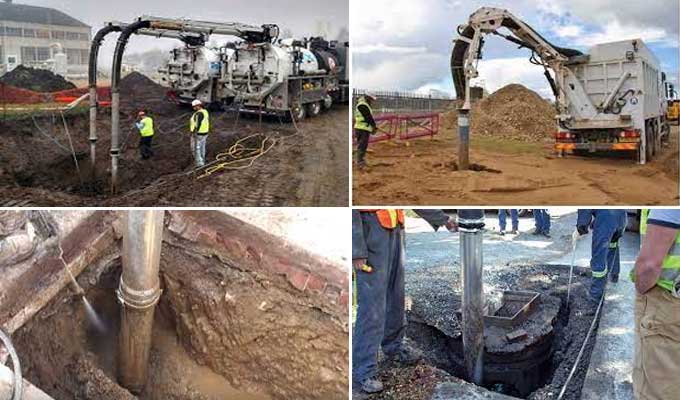
Hydro Excavation Equipment and Workflow: Benefits and Applications

For contractors working in a range of construction and utility sectors, hydro excavation is more efficient & profitable. Moreover, it is becoming more common for utility lines to install underground, which has led to an increase in utility strikes. Hydro excavation solves this problem. In comparison to traditional excavation methods, hydro excavation provides a safer and more effective alternative.
Workflow of Hydro Excavation
Hydro excavation is an environmentally safe method. It involves injecting high-pressure water into a target area, removing soil and other objects with an industrial-strength vacuum. After that, truck-mounted tanks transport the debris to a designated disposal site. Hydro excavation involves cutting through the soil with high-pressure water wands and softening it.
A truck with an excavation tank then suctions the mud slurry, at which point crews can expose a deeper layer of soil and any constructed underground facilities. When the work finishes, the soil will cover with the slurry released from the holding tank.
A vacuum source requires for hydro excavation equipment. For Example, fans or positive displacement blowers can use for this application. Hydraulic excavations come in a variety of options using the system.
Types of Hydro Excavation Equipment
Modern Hydro Excavator Trucks
Modern hydro excavators, which are corrosion-resistant and abrasion-resistant, use the same steel in vacuum loaders. Hydraulic door locks secure the debris tank door, which operates from the side, ensuring maximum safety. As soon as the indicator registers full, an automatic vacuum breaker shuts down the airflow to the vacuum system, preventing the body from overfilling and the discharge of wastewater into the atmosphere.
Bucket Chain Excavator
Mining machines can excavate and remove overburden, coal, ash, or chalk far beneath the bench level. Utilizing bucket chain excavators to remove material from below is very useful when the pit floor is unstable or underwater. A bucket-wheel excavator uses buckets to dig up material before depositing it into the bucket chute and discharging it.
The main difference is that the buckets are mounted on a flexible chain rather than on rigid wheels like a chainsaw blade. In contrast, bucket wheel excavators excavate topsoil and overburden material below a vehicle's superstructure.
Vacuum Excavation Trucks
Cable networks and pipelines can excavate safely around these devices. A vacuum truck may repair utilities and pipelines, maintain railroad railways, clear sewers, clear around tree roots, and work in basements. In addition, it also often clears away pollution and clean debris from gutters and gullies as part of environmental maintenance.
Modern models include a compressed air cylinder, a waste storage chamber, a vacuum suction, and twin or triple air vehicle fans. These trucks scoop back soil after dispersing it with a lance so that it can dispose of.
Application of Hydro Excavation
- Getting rid of debris.
- Identifying and locating utilities underground and under the ground.
- Installation of a line.
- Installation of poles.
- Visiting potholes.
- Inspecting, repairing, and rehabilitating sewers.
- Excavation in remote locations.
- Trenching of slot holes.
- Clearing of Land.
Benefits of Hydro Excavation
Hydro excavation is a better method for digging utility lines. In most cases, sewers and pipes are buried underground. Hydro excavation allows for reaching the soil without having to worry about hitting a line. It is easier and safer to use hydro excavation as you will not have to worry about causing damage while digging.
Water excavation is also extremely useful for cleaning sewers and pipes since the water is strong and can collect debris. The process of hydro excavation is less likely to damage pipes. As a result, the hydro excavation process can use for excavation projects as well as drain and sewer cleaning.
To learn more, watch the following video tutorial.
Video Source: Hog Technologies
Wrapping it Up
That excavation process involves water pressure and a vacuum system. A pressured injection of water liquefies the soil.
While it is vacuumed from the excavation, the excavated slurry is removed from the excavation using a large vacuum hose. As a result, it is safe and non-destructive to excavate softly in any area where utilities and pipelines are at risk.


